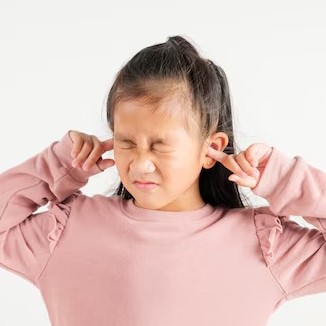Key pointers:
- Small eardrum perforations can heal naturally within weeks.
- Larger or chronic tears may need medical attention or surgical repair.
- Avoid inserting objects, swimming, or exposing the ear to loud noise while it heals.
- ENT evaluation helps confirm healing progress and prevent complications.
What Happens When the Eardrum Is Damaged
The eardrum, or tympanic membrane, is a thin layer that separates the outer ear canal from the middle ear. It plays an important role in hearing by vibrating in response to sound waves and protecting the middle ear from infection.
When the eardrum is torn or punctured, known as a perforated eardrum, it can cause hearing loss, ear pain, ringing (tinnitus), or even discharge. The injury may occur from infections, sudden pressure changes, loud blasts, or inserting objects like cotton buds too deeply.
Can It Heal on Its Own?
In many cases, small perforations heal naturally within a few weeks. The body’s own tissue can close the gap as long as the ear remains dry and free from infection.
However, larger tears or chronic perforations may not close on their own. If the eardrum fails to heal after several weeks, or if there is persistent discharge or hearing loss, an ENT specialist may recommend a procedure such as myringoplasty (surgical repair of the eardrum).
When Healing Takes Longer Than Expected
A damaged eardrum may take longer to heal if:
- The tear is large or irregular.
- The patient has repeated ear infections.
- The ear was exposed to water during recovery.
- There is an underlying sinus or Eustachian tube problem.
In such cases, ENT specialists may perform a microscopic examination to check healing progress and rule out ongoing infection.
Signs That You Should See an ENT Specialist
Seek medical attention if you experience:
- Persistent hearing loss or ringing after an ear injury.
- Ongoing pain, discharge, or bleeding from the ear.
- Recurrent ear infections following a known eardrum tear.
- Dizziness or balance issues accompanying the ear injury.
A simple ear examination using an otoscope or videoscope allows the ENT to confirm the size and location of the perforation and recommend the most suitable management plan.
What You Can Do at Home While It Heals
1. Keep the Ear Dry
Avoid swimming or letting water enter the ear canal while bathing. Moisture can delay healing and increase infection risk. A small piece of cotton coated with petroleum jelly can be placed loosely at the outer ear to keep it dry during showers (but should not be pushed inside).
2. Avoid Inserting Objects or Ear Drops Without Advice
Cotton buds, tissues, or home ear-cleaning devices can aggravate the injury. Only use prescribed ear drops recommended by your doctor.
3. Protect Against Loud Noises
While the eardrum is healing, loud noises can cause discomfort or worsen the tear. Using hearing protection in noisy environments is recommended.
4. Prevent Infections
If your doctor prescribes antibiotics or ear drops, use them as directed. Managing nasal allergies or sinus issues also helps prevent fluid buildup that can affect ear pressure.
When Surgery May Be Needed
If the eardrum does not heal after several weeks or months, your ENT may recommend surgical repair. Myringoplasty is a procedure where a small patch or tissue graft is used to close the perforation. It is typically performed under general anaesthesia, and most patients recover within a few weeks.
Repairing a chronic perforation helps restore hearing, prevent recurrent infections, and protect the middle ear.
A damaged eardrum often heals on its own, especially when the tear is small and infection-free. However, larger or long-standing perforations require medical assessment to ensure proper healing and to prevent long-term hearing issues. With appropriate precautions, keeping the ear dry, avoiding trauma, and seeking timely ENT care, most patients recover well.
Frequently Asked Questions
- Can I fly with a perforated eardrum?
It depends on the size and cause of the perforation. Some people with small, healed tears can fly without issues, while others may experience ear pain due to pressure changes. It’s best to seek your ENT’s advice before travelling, especially if the eardrum is still healing or if there’s an active infection. - Does a damaged eardrum hurt while it’s healing?
Mild discomfort or a feeling of fullness in the ear is common at first, but severe pain should not persist. If you experience worsening pain or discharge, see an ENT specialist as it may signal infection or delayed healing. - Can I clean my ear while it’s healing?
Avoid inserting cotton buds, fingers, or ear-cleaning tools into the ear canal. These can worsen the tear or introduce bacteria. If earwax buildup becomes an issue, it’s safer to let your ENT assess and clean the ear under direct vision. - Will my hearing return to normal?
Most people regain full hearing once the eardrum heals naturally or after surgical repair. However, if there’s damage to the middle ear bones or long-standing infection, some hearing loss may remain. Regular follow-up helps ensure hearing recovers as expected.
Get Personalised ENT Care for the Whole Family
If you or your child have experienced ear pain, hearing changes, or a known eardrum injury, Dr Soon Sue Rene at Adult & Child ENT Specialists provides comprehensive assessment and care for ear conditions in both adults and children.
Schedule a consultation to discuss your symptoms and receive guidance on safe healing and treatment options.




